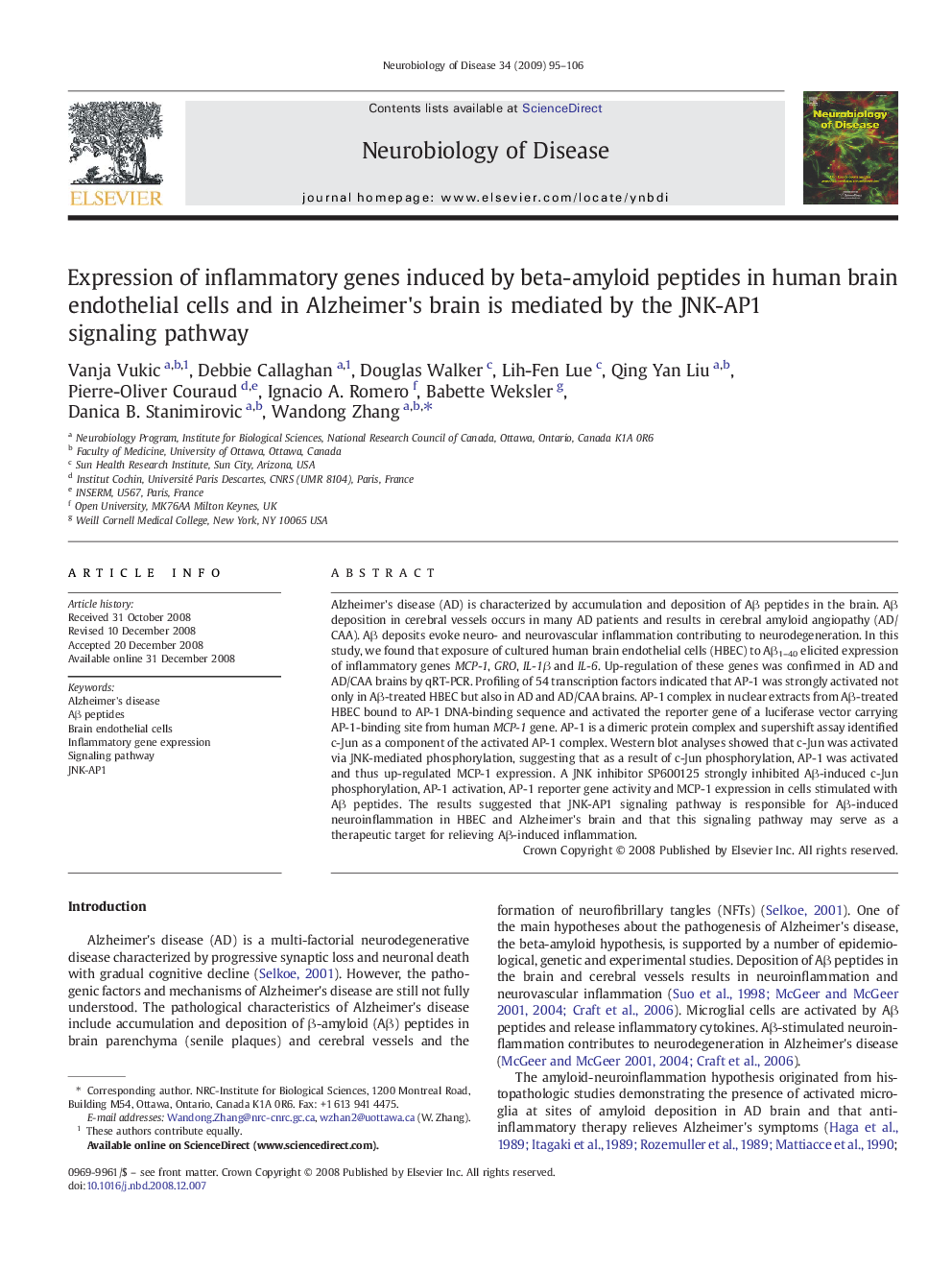| Article ID | Journal | Published Year | Pages | File Type |
|---|---|---|---|---|
| 3070329 | Neurobiology of Disease | 2009 | 12 Pages |
Alzheimer's disease (AD) is characterized by accumulation and deposition of Aβ peptides in the brain. Aβ deposition in cerebral vessels occurs in many AD patients and results in cerebral amyloid angiopathy (AD/CAA). Aβ deposits evoke neuro- and neurovascular inflammation contributing to neurodegeneration. In this study, we found that exposure of cultured human brain endothelial cells (HBEC) to Aβ1–40 elicited expression of inflammatory genes MCP-1, GRO, IL-1β and IL-6. Up-regulation of these genes was confirmed in AD and AD/CAA brains by qRT-PCR. Profiling of 54 transcription factors indicated that AP-1 was strongly activated not only in Aβ-treated HBEC but also in AD and AD/CAA brains. AP-1 complex in nuclear extracts from Aβ-treated HBEC bound to AP-1 DNA-binding sequence and activated the reporter gene of a luciferase vector carrying AP-1-binding site from human MCP-1 gene. AP-1 is a dimeric protein complex and supershift assay identified c-Jun as a component of the activated AP-1 complex. Western blot analyses showed that c-Jun was activated via JNK-mediated phosphorylation, suggesting that as a result of c-Jun phosphorylation, AP-1 was activated and thus up-regulated MCP-1 expression. A JNK inhibitor SP600125 strongly inhibited Aβ-induced c-Jun phosphorylation, AP-1 activation, AP-1 reporter gene activity and MCP-1 expression in cells stimulated with Aβ peptides. The results suggested that JNK-AP1 signaling pathway is responsible for Aβ-induced neuroinflammation in HBEC and Alzheimer's brain and that this signaling pathway may serve as a therapeutic target for relieving Aβ-induced inflammation.
